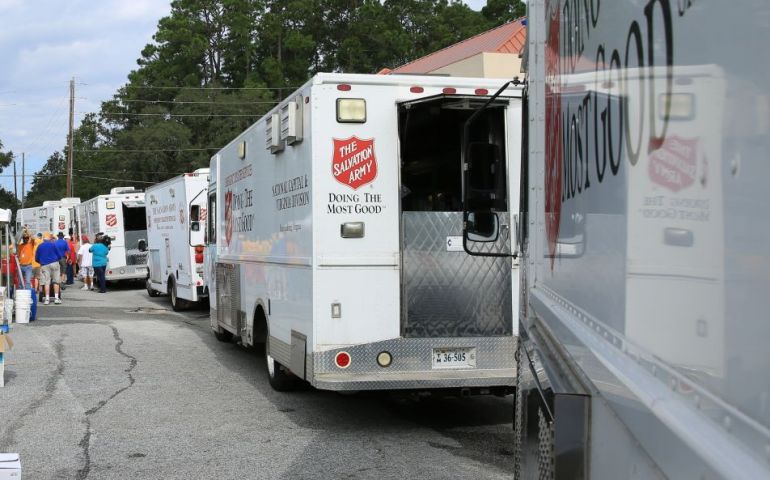The Salvation Army of Georgia Mobilizes Emergency Disaster Response in Wake of Hurricane Helene
Donald Felice | donald.felice@uss.salvationarmy.org

ATLANTA, GA (October 1, 2024)—In response to Governor Brian Kemp's declaration of a state of emergency due to Hurricane Helene, The Salvation Army of Georgia quickly deployed emergency disaster services teams across the state, joining the collective efforts of The Salvation Army disaster services in seven other southeastern U.S. states impacted by the massive storm.
Hurricane Helene, a Category 4 storm that made landfall in northeastern Florida, tore through Georgia with destructive winds exceeding 75 mph, leaving over 550,000 residents without power. Power outages continue to affect 19 counties, with over 90% of those counties still without electricity.
Since 1890, The Salvation Army of Georgia has offered year-round assistance to individuals and families in need while also responding to natural disasters, including historic events such as Georgia’s strongest recorded hurricane in 1898. In response to Hurricane Helene, The Salvation Army of Georgia’s Emergency Disaster Services (EDS) has deployed three Incident Management Teams (IMATs) to the most heavily affected regions: Coffee (Douglas) and Bacon (Alma) Counties, Lowndes (Valdosta) County, and Toombs (Vidalia) County. These teams are providing essential relief services, including meals, water, snacks, comfort kits, clean-up kits, and emotional and spiritual support to over 25 counties still grappling with widespread outages. Eighteen Salvation Army canteens (mobile feeding units) are currently in operation, supporting these efforts.
In addition to these major deployments, The Salvation Army has sent smaller response teams to Augusta, Savannah, and Elberton to support another 11 counties. This follows The Salvation Army's recent response to Tropical Storm Debby, during which over 40,000 meals, drinks, and snacks were distributed in Chatham and Bryan counties.
"The Salvation Army has over 40 local units across Georgia, providing shelter, social services, church ministries, and family stores," said Major Barry Corbitt, Georgia General Secretary. "With 24 canteens (mobile feeding units) and more than 100 officers, staff, and volunteers, we anticipate serving over 30,000 individuals in the next five days across 36 of the most impacted counties. As of today, we’ve already provided more than 8,000 meals and 18,000 snacks and drinks to those in need, including first responders."
In times of disaster, The Salvation Army is a trusted responder. With the generous support of the community, The Salvation Army meets the immediate needs of those affected by disasters. Financial contributions are the most effective way to support relief workers and help those impacted. All designated gifts go directly to disaster relief efforts, ensuring that 100% of donations reach those in need.
How You Can Help:
- Visit HelpSalvationArmy.org
- Call 1-800-SAL-ARMY
For the latest information on The Salvation Army disaster relief efforts, please visit www.disaster.salvationarmyusa.org.
About The Salvation ArmyThe Salvation Army annually helps more than 30 million Americans overcome poverty, addiction, and economic hardships through a range of social services. By providing food for the hungry, emergency relief for disaster survivors, rehabilitation for those suffering from drug and alcohol abuse, and clothing and shelter for people in need, The Salvation Army is doing the most good at 7,600 centers of operation around the country. In the first-ever listing of “America’s Favorite Charities” by The Chronicle of Philanthropy, The Salvation Army ranked as the country’s largest privately funded, direct-service nonprofit. For more information, visit www.SalvationArmyUSA.org. Follow us on Twitter @SalvationArmyUS and #DoingTheMostGood.